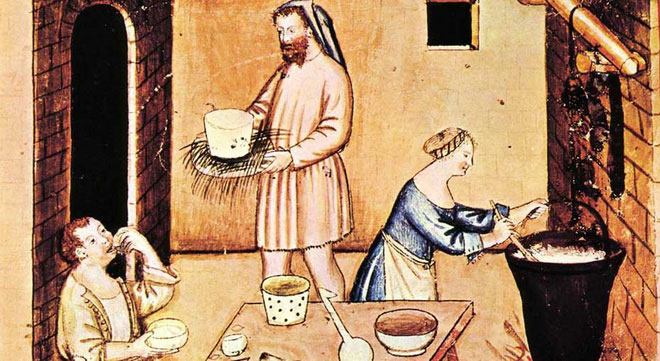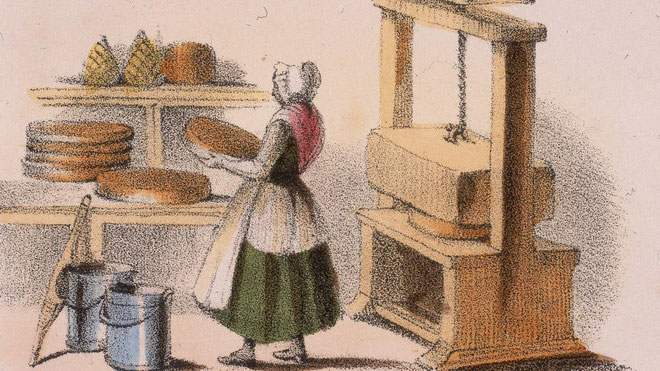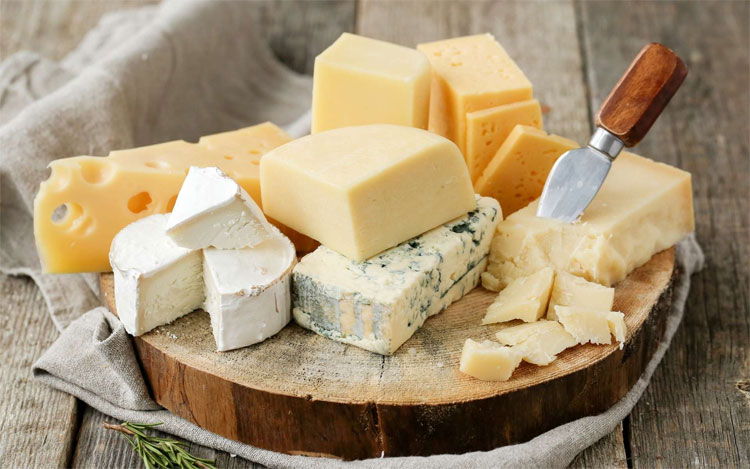Believe it, this color of cheese turns out to be a
made from milky white but why are they so shiny yellow? What conspiracy theory is behind this "mission"?
Usually you see cheeses that are yellow, orange but cheeses made with milky white milk, and no bacteria can turn it orange.
Is there any conspiracy theory here? The two fictional ' orange ' stories of cheese will surprise you.
Story 1:

Once upon a time in the 17th century in England there was a village specializing in cheese making. Wanting to earn a few more, they trimmed the fatiest part of the milk. This part is for avocado, it is not sold directly to someone who needs it.
But the problem is that cheese is now only made from low-fat milk and it is no longer a fawn. The white color will "denounce" its quality.'Is not!' - the villagers say and they dye the cheese, starting a tradition that lasts until now.
Story 2:

There is a saying : 'You are what you eat' and this is also true for cows. In spring or summer, cows crawl out to graze, their milk will make cheese really bright yellow.
In contrast, at times of less freedom, cow's milk is also pale in color, wilting even though it is still as good as usual. And instead of being happy about the discoloration of the four seasons, the farmer is too tired!
Customers keep commenting on product quality based on . observations outside.
What do farmers know to do? They decided to dye the cheese, turn them all yellow, so that's all!

The natural color of cheese is also very different.
I don't know which two stories are better, but the original cheese is definitely white or light yellow. But now they have both orange and that is man-made.
Do not know because of the hand or how the cheese is increasingly dark. Or maybe we should 'blame' Photoshop and advertising?
In the end how to color cheese?
Gina Mode, a researcher at the University of Wisconsin-Madison, USA, said it was due to cows eating grass.
In grass contains lots of beta carotene - an orange pigment that is also found in carrots, pumpkins and sweet potatoes. Cows will partially convert beta carotene to vitamin A.

Mimolette is a kind of hard French cheese with a brilliant orange color.
The rest is then transferred into milk and finished in cheese. But even milk is not yellow. Only when adding enzymes to break down beta carotene fat droplets will the milk turn yellow.
The natural color of cheese is also very different. It varies with the type of cow, each type of grass and the way it crawls.
Goat milk cheese is almost white because this animal transfers all beta carotene to vitamin A. Or there are also completely non-beta-carotene cows. New Zealand cheese has a clear yellow color, indicating a high grass diet.

Compare natural colors of cheeses.
So to make cheese color at will, can you add beta carotene to milk? Scientists at the University of Guelph (Canada) said that no problem, except that the cheese will have a very bold color and taste like . carrots.
In fact, people use dyed cashew (from cashew seeds in the tropics). It can be soluble in fat and when used in small amounts will not cause changes in taste. Not only cheeses but also butter apply this way.
Super delicious cheese, but the source is also interesting? Now I understand why milk-based cheeses have such a 'fictional' orange color!
- Electricity production from cheese, serving 1500 people
- Homemade cheese from bacteria in ... armpits, human legs
- Why do some types of cheeses smell so badly?
- Exotic delicious cheese made from coal
- Nobody knows how English people produce fat cheese
- 3,200 year cheese contains deadly bacteria in Egyptian tombs
- Amazing journey from cow's milk to the world's most addictive food!
- Why do cheese have holes?
- Li explained the phenomenon of ear holes stinking ... rotten cheese that anyone wears advice also
- 3600 year old cheese on ancient mummy
- Cheese was first prepared 7500 years ago
- Evidence of cheese production from 7,200 years ago in Croatia was found
 'Fine laughs' - Scary and painful torture in ancient times
'Fine laughs' - Scary and painful torture in ancient times The sequence of numbers 142857 of the Egyptian pyramids is known as the strangest number in the world - Why?
The sequence of numbers 142857 of the Egyptian pyramids is known as the strangest number in the world - Why? History of the iron
History of the iron What is alum?
What is alum?